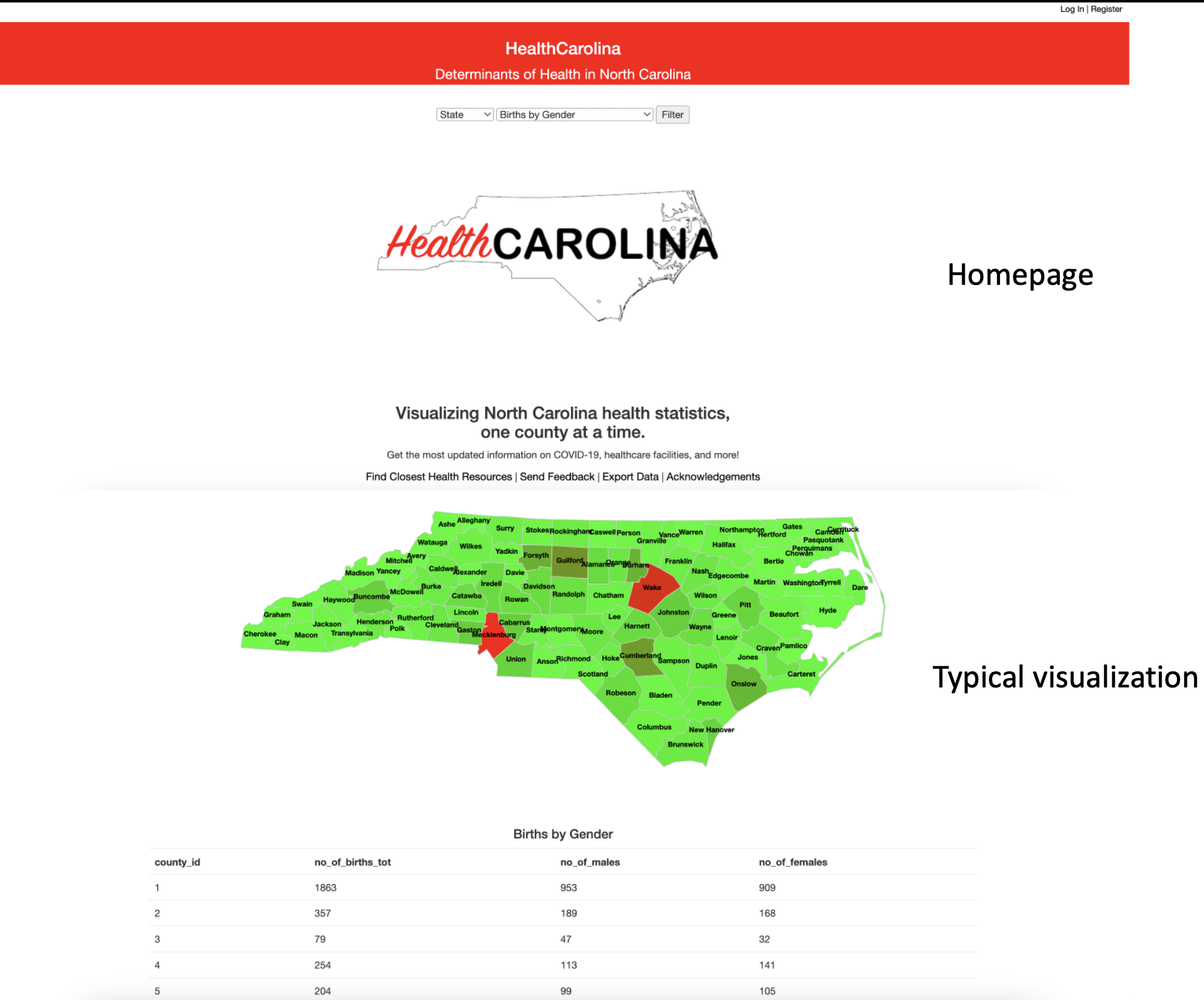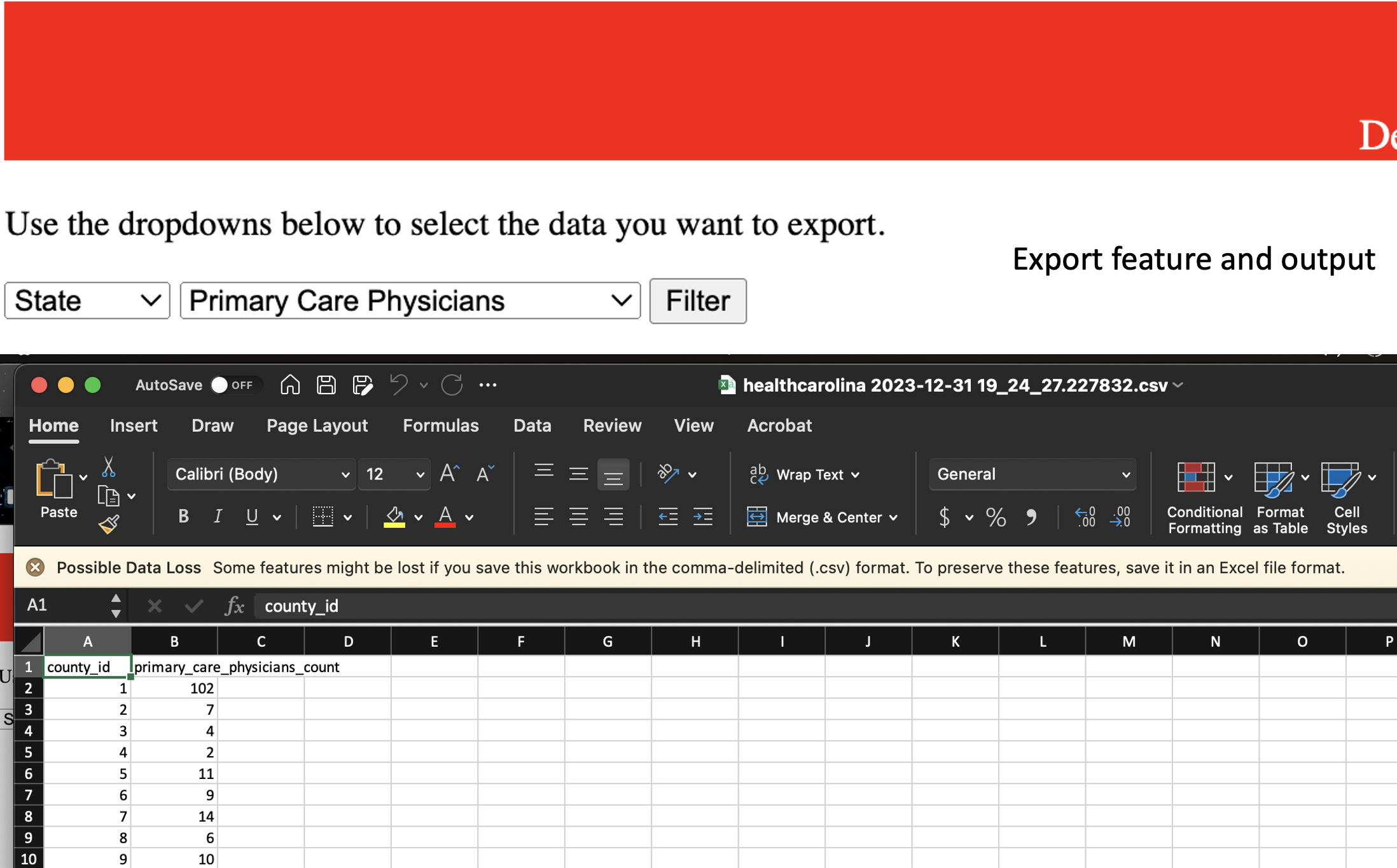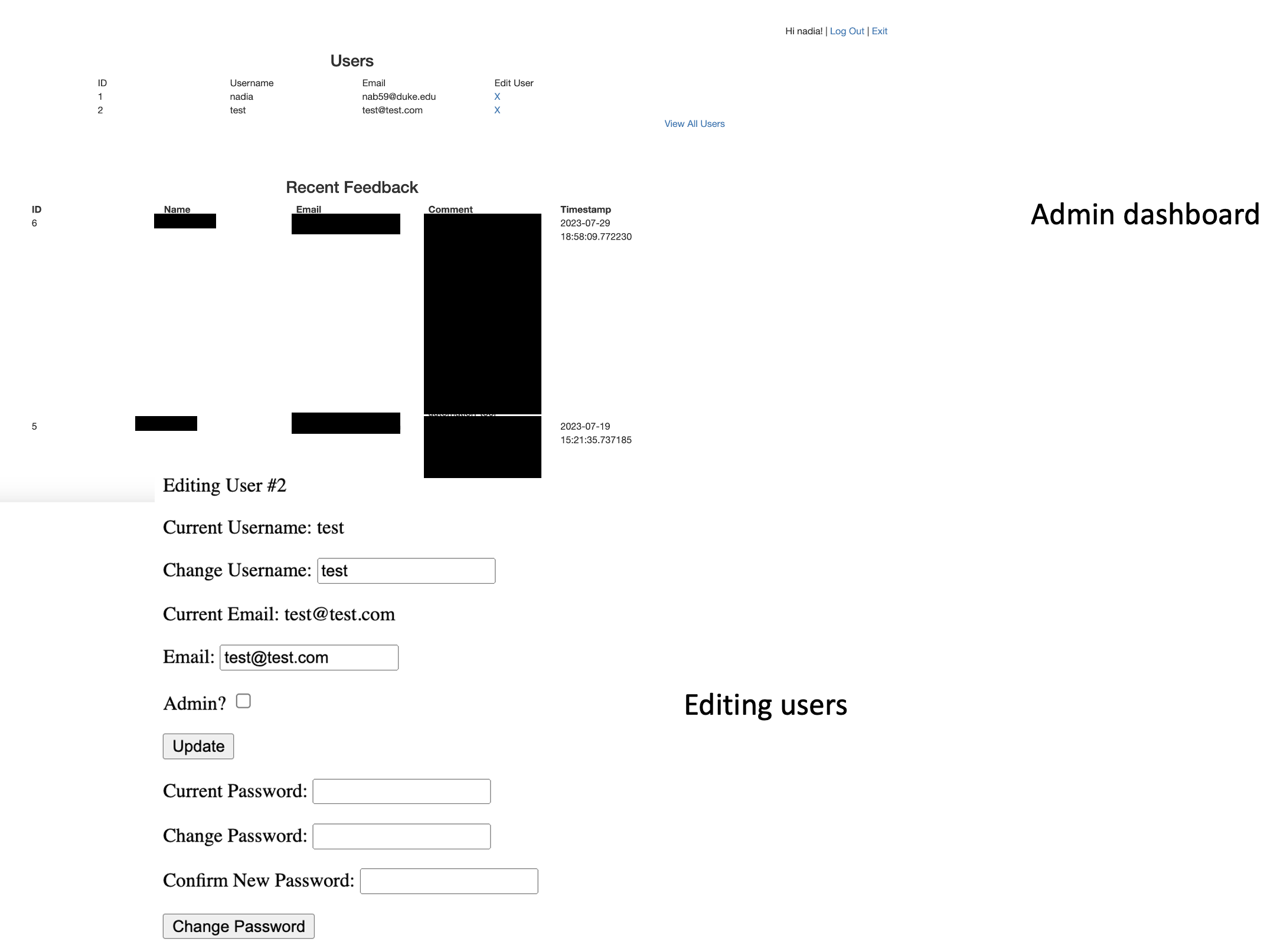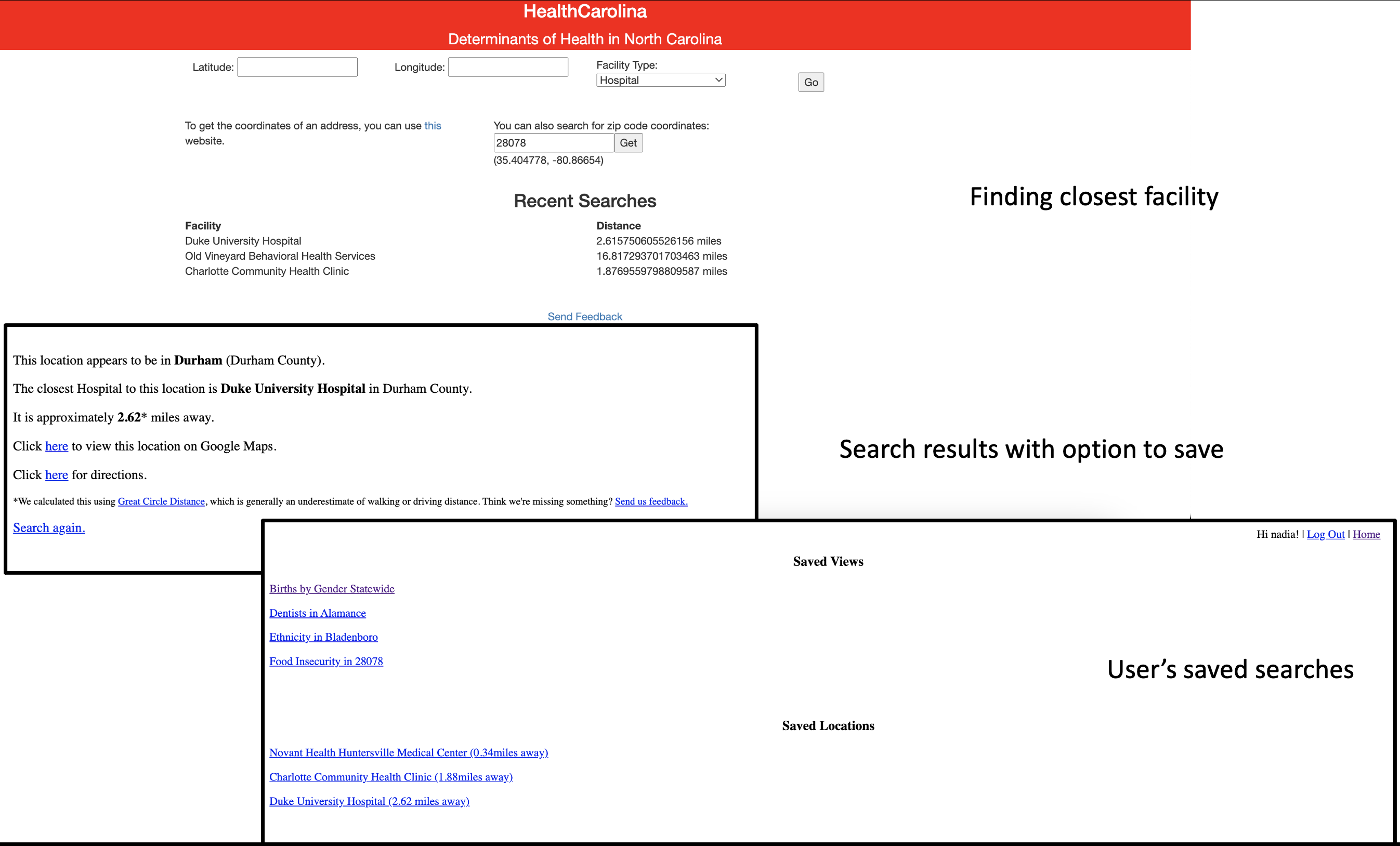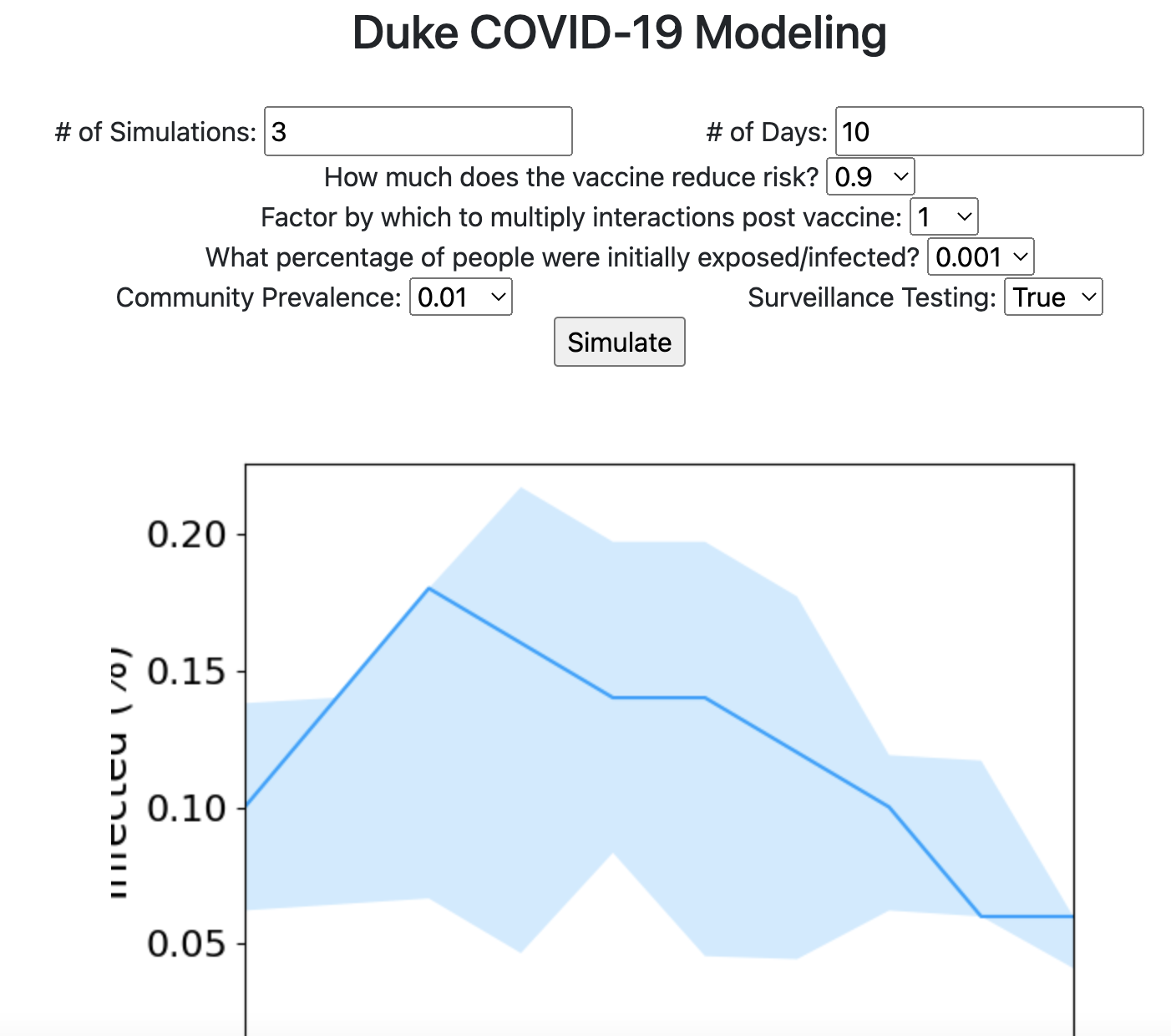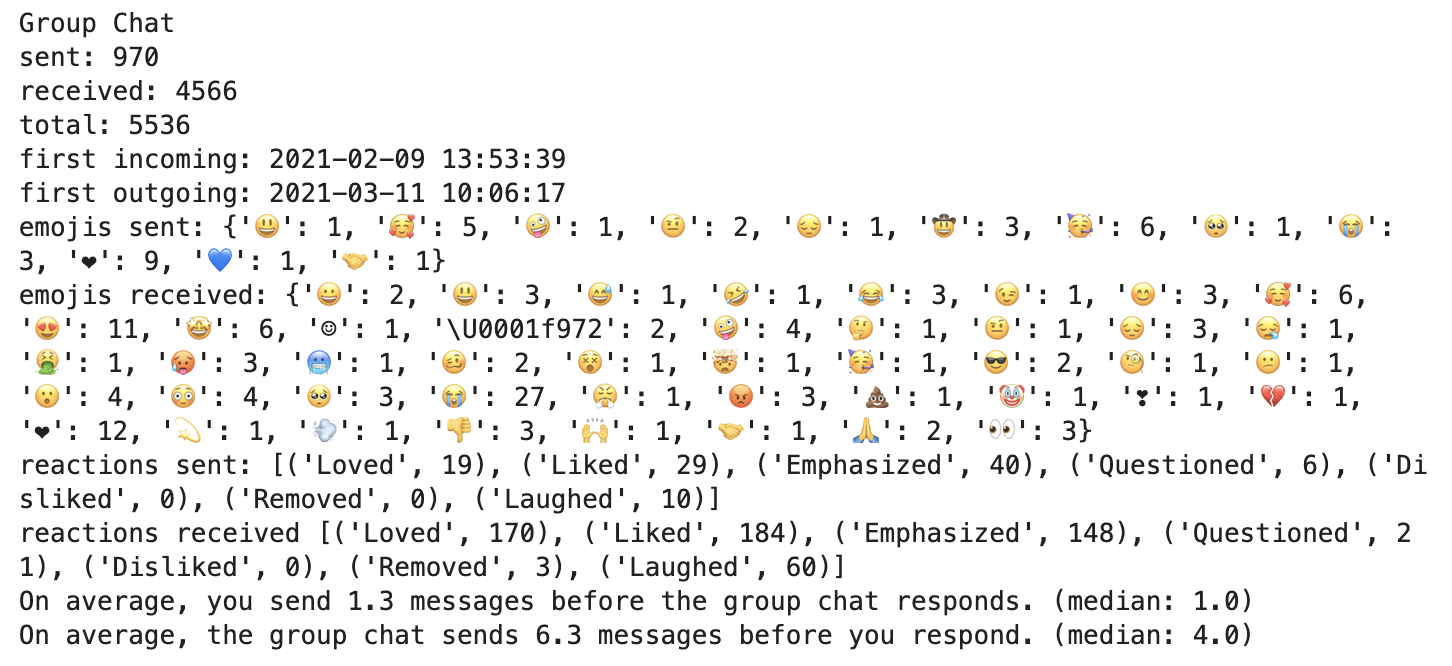Inspired by the Daily Bruin's "How quickly do classes fill up?", I created a Python tool to scrape class information from Duke's student information system, DukeHub, periodically for about an hour each day during registration. (I later learned that Duke has an API for class offerings already.)
Over the course of the fall 2021 semester, I developed a website to display North Carolina health statistics at the county level for my Database Systems class. In addition to generating visuals, the website could also calculate the nearest health facility available in the database. After the course ended, I updated the website to make it more user-friendly, with the option to create an account, save search results and make changes via an admin dashboard.
